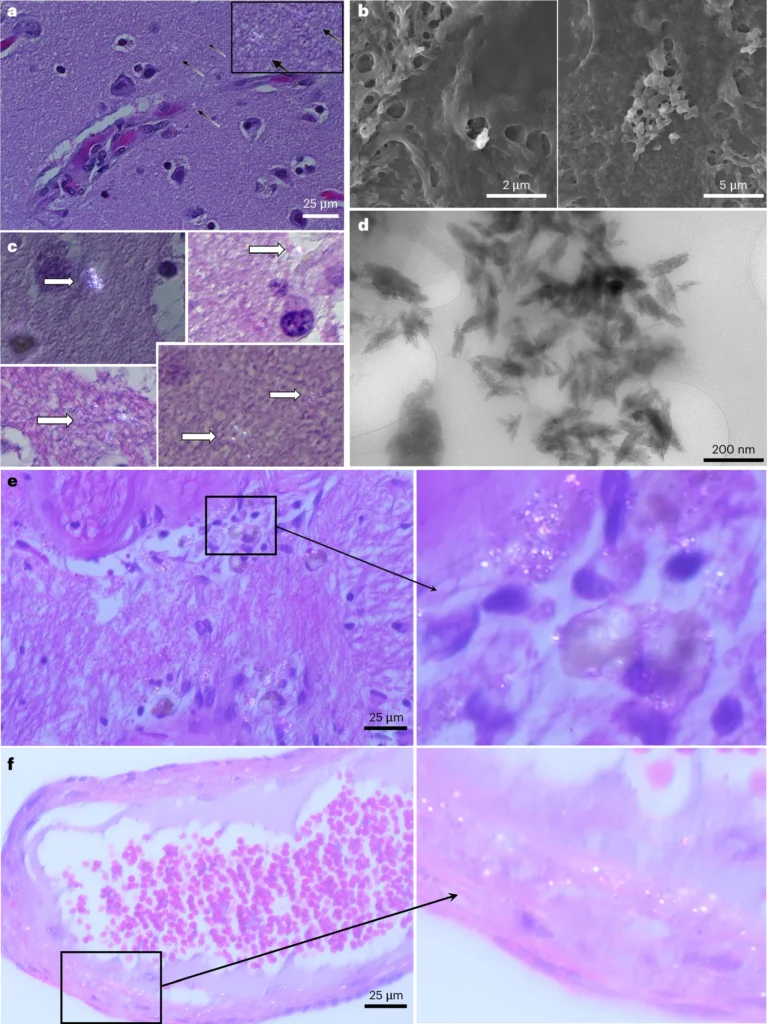Recent research has detected microplastics in human brain tissue, raising questions about potential health implications and the need for further study.
Key Points at a Glance:
- Microplastics have been identified in human brain tissue, indicating that these particles can cross the blood-brain barrier.
- The study analyzed brain samples from deceased individuals, finding various types of microplastics, including polyethylene and polyethylene terephthalate.
- The presence of microplastics in the brain raises concerns about potential neurological effects and underscores the need for further research.
- This discovery highlights the pervasive nature of microplastic pollution and its potential impact on human health.
A recent study published in Nature Medicine has revealed the presence of microplastics in human brain tissue, marking the first time these particles have been detected in the human brain. The research analyzed brain samples from deceased individuals and found various types of microplastics, including polyethylene and polyethylene terephthalate (PET). These findings indicate that microplastics can cross the blood-brain barrier, a critical protective membrane that shields the brain from harmful substances.
Microplastics—tiny plastic particles less than five millimeters in size—are now found in almost every part of the environment, from oceans and soil to the air we breathe. Previous studies have confirmed their presence in human lungs, bloodstream, and even placentas. However, their detection in brain tissue raises serious concerns about potential neurological effects, including inflammation, oxidative stress, and disruptions to normal brain function.
How Do Microplastics Enter the Brain?
Scientists believe that microplastics enter the human body primarily through ingestion and inhalation. Contaminated food, drinking water, and airborne particles contribute to daily exposure. Once inside the body, these microscopic particles can travel through the bloodstream and reach major organs. The latest findings suggest that some microplastics are small enough to bypass the blood-brain barrier, an essential defense mechanism that normally prevents toxins and pathogens from entering the brain.
Potential Health Risks
While the long-term effects of microplastics on the human brain remain unclear, researchers suggest that these particles may contribute to a range of neurological disorders. Laboratory studies on animals and cell cultures have shown that exposure to microplastics can lead to:
- Neuroinflammation – an immune response that may damage neurons and contribute to diseases like Alzheimer’s and Parkinson’s.
- Oxidative stress – an imbalance in free radicals that can cause cellular damage.
- Disruptions in neurotransmission – potentially leading to cognitive impairment or behavioral changes.
- Accumulation of toxic chemicals – many plastics contain harmful additives such as bisphenols and phthalates, which have been linked to endocrine disruption and carcinogenic effects.

The Growing Concern of Microplastic Pollution
The detection of microplastics in the human brain is yet another alarming sign of the widespread infiltration of plastic pollution into biological systems. Plastics are now ubiquitous in modern life, and their breakdown releases micro- and nanoplastics that persist in the environment for decades. These particles have been found in deep-sea trenches, Arctic ice, and even falling rain.
Efforts to curb plastic pollution include policy changes, technological advancements in biodegradable materials, and increased public awareness. Governments worldwide are implementing bans on single-use plastics and encouraging recycling initiatives. However, reducing microplastic exposure will likely require systemic changes in industrial production, waste management, and consumer behavior.
Scientists are calling for more extensive research to determine the long-term health effects of microplastics on the brain and other vital organs. Future studies will need to explore how different types of plastic particles interact with brain cells and whether chronic exposure leads to neurodegenerative diseases. There is also a pressing need for better methods of detecting microplastics in biological tissues and assessing their potential toxicity.
In the meantime, individuals can take steps to minimize their exposure to microplastics by:
- Using glass or stainless steel containers instead of plastic.
- Filtering drinking water to remove potential contaminants.
- Reducing consumption of processed foods, which often contain microplastic particles from packaging.
- Avoiding synthetic clothing, which sheds microfibers into the environment during washing.
The presence of microplastics in human brain tissue underscores the urgent need for global action on plastic pollution. As scientists continue to investigate the risks, raising awareness and advocating for sustainable alternatives will be crucial in protecting both environmental and human health.